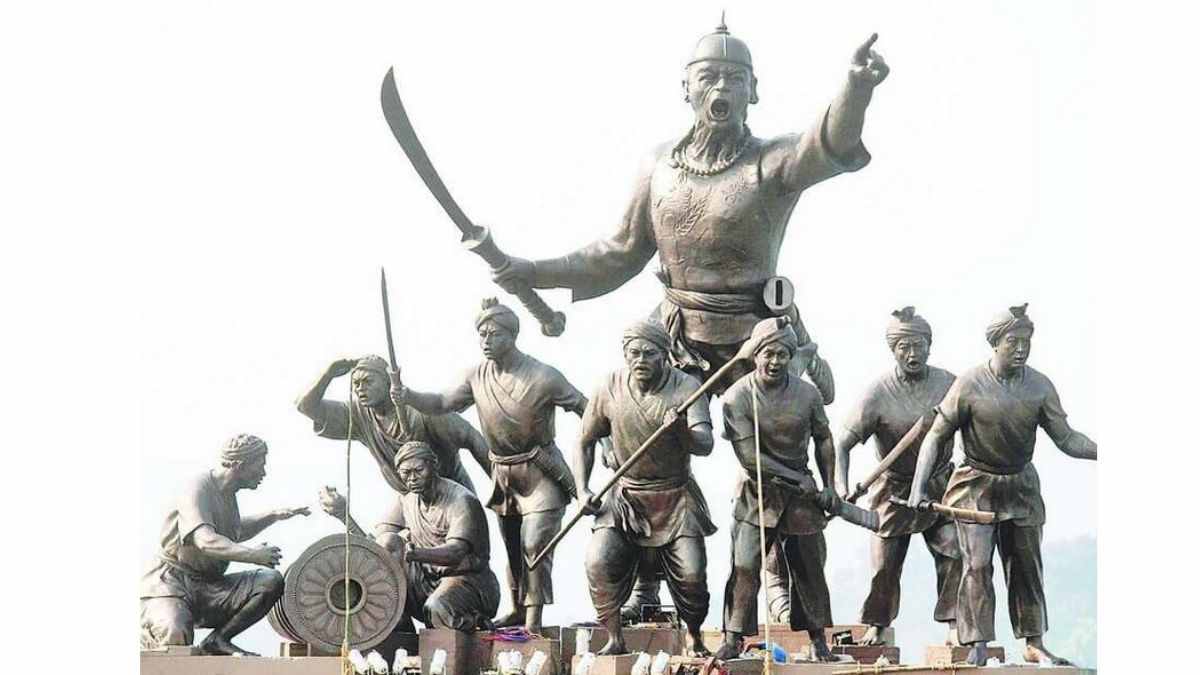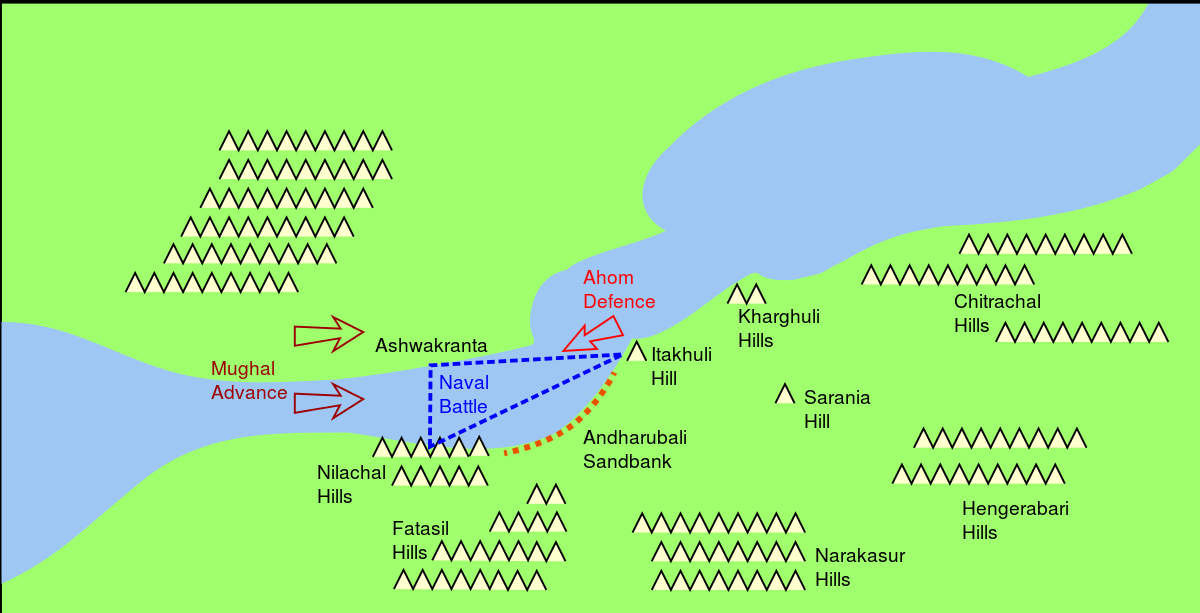The Battle of Saraighat took place in 1671 near Guwahati, India. It was a decisive conflict between the Ahom Kingdom and the Mughal Empire, led by Aurangzeb. Lachit Borphukan, the Ahom commander, played a crucial role in the Ahom victory, defending Assam from the Mughal invasion.
Historical Context of The Battle of Saraighat
To comprehend the significance of the Battle of Saraighat, it’s essential to delve into the geopolitical landscape of 17th-century India. The Ahom Kingdom, led by the Ahom dynasty, held sway over Assam, a region known for its strategic importance and abundant resources. On the other hand, the Mughal Empire, under the rule of Aurangzeb, sought to expand its dominion into the northeastern territories.
The clash of these two powers became inevitable as both the Ahoms and the Mughals aimed to secure control over the lucrative trade routes and resources of the Brahmaputra Valley.

Escalation of Tensions
The tensions between the Ahom Kingdom and the Mughal Empire reached a boiling point with the Mughal viceroy of Bengal, Ram Singh, attempting to extend Mughal influence into Assam. He led a formidable army, equipped with artillery and cavalry, towards the Ahom heartland, igniting the fuse that would lead to the Battle of Saraighat.
The Ahom ruler, Lachit Borphukan, emerged as a charismatic and able military leader. Recognizing the impending threat, he mobilized his forces to counter the Mughal advance. The stage was set for a confrontation that would determine the fate of the region.
Strategic Significance of Saraighat
The location of Saraighat played a crucial role in the unfolding drama. The narrow passage of the Brahmaputra at Saraighat provided a natural bottleneck, creating an ideal defensive position for the Ahom forces. Lachit Borphukan capitalized on this geographical advantage, deploying his troops strategically to defend against the Mughal onslaught.
The Ahom navy, consisting of nimble watercraft, proved instrumental in navigating the turbulent waters of the Brahmaputra. Lachit Borphukan’s understanding of the terrain and effective use of guerrilla tactics added another layer of complexity to the Mughal advance.

The Battle Unfolds
The Battle of Saraighat commenced in full force as the Mughal forces, under Ram Singh, attempted to breach the formidable Ahom defenses. The Ahom navy, led by Lachit Borphukan himself, engaged the Mughal fleet in a fierce maritime conflict. The narrow channels of the Brahmaputra turned the battle into a close-quarters struggle, nullifying the Mughals’ numerical advantage.
Lachit Borphukan’s leadership and the determination of the Ahom forces proved pivotal. Despite facing a technologically superior enemy, the Ahoms displayed remarkable resilience and tactical understanding. The Mughal forces, unaccustomed to the challenging riverine terrain, found themselves at a disadvantage.
The Turning Point
The turning point of the Battle of Saraighat is often attributed to Lachit Borphukan’s legendary leadership. His inspirational presence on the battlefield galvanized the Ahom troops, instilling a sense of purpose and determination. Legend has it that Lachit, realizing the gravity of the situation, beheaded his maternal uncle for showing signs of retreat, sending a powerful message about the consequences of cowardice.
This act of sacrifice and conviction profoundly impacted the morale of the Ahom forces, who rallied under Lachit’s leadership. The Mughals, facing fierce resistance and unable to break the Ahom defenses, eventually retreated.
The Battle of Saraighat left an indelible mark on Indian history. Lachit Borphukan’s valiant efforts in defending Assam against the Mughal incursion elevated him to the status of a national hero. His legacy continues to be celebrated in Assam and beyond, symbolizing the spirit of resistance and the triumph of indigenous forces against external aggression.
The Battle of Saraighat also reinforced the importance of understanding and leveraging the geographical terrain in military strategy. The natural defenses offered by the Brahmaputra River and the strategic positioning of Saraighat showcased the significance of adapting tactics to the unique characteristics of the battlefield.
The Battle of Saraighat stands as a testament to the resilience and strategic acumen of the Ahom Kingdom under the leadership of Lachit Borphukan. This historic clash not only secured the autonomy of Assam but also demonstrated the limitations of brute force in the face of determined and resourceful defenders.
The legacy of Saraighat endures in the collective memory of the people of Assam, serving as a reminder of the region’s historical struggles for sovereignty. As we reflect on this pivotal moment in Indian history, it is essential to recognize and celebrate the individuals and events that shaped the destiny of nations.
Also Read: Charaideo Maidam: Amazing History and Significance of the Resting Place of Ahom Kings